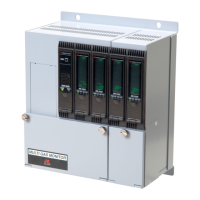
Do you have a question about the Riken Keiki RM-5000 Series and is the answer not in the manual?
| Model | RM-5000 Series |
|---|---|
| Detection Principle | Electrochemical, Catalytic, or Infrared |
| Detection Gas | Oxygen (O2), Combustible Gases (LEL), Toxic Gases (CO, H2S, etc.) |
| Response Time | Typically <30 seconds |
| Alarm Indicators | Visual (LED), Audible (buzzer) |
| Output Signal | 4-20 mA, RS-485 Modbus |
| Operating Temperature | -20°C to +50°C |
| Certifications | ATEX, IECEx |
Introduction to the indicator/alarm unit RM-5000 series manual.
Explains the intended use of the RM-5000 series with gas detector heads.
Defines safety alert symbols and terms used in the manual.
Details how to confirm the CE marking type of the instrument.
Highlights critical safety hazards and warnings for the unit.
Details important warnings for safe operation and potential damage.
Lists essential precautions for proper and safe use of the unit.
Identifies the main unit models and included accessories.
Provides a visual overview and dimensions of the unit.
Details the names and functions of all parts on the front panel and LCD.
Illustrates the internal functional structure and connections of the unit.
Outlines precautions to follow before operating the indicator/alarm unit.
Specifies environmental and physical conditions for safe and effective installation.
Covers essential considerations for designing a system using the indicator/alarm unit.
Provides step-by-step instructions for physically installing the unit into a panel.
Explains the correct procedures and cable specifications for wiring connections.
Lists critical steps and checks before powering up the unit.
Describes standard operational flows and mode transitions.
Details the sequence for powering on and initiating the unit's startup process.
Explains the different operational modes available on the indicator/alarm unit.
Describes the normal operating mode for gas concentration display.
Explains how to perform functional tests for alarm activation.
Details how to access and use the user-configurable settings menu.
Provides instructions on how to safely turn off the indicator/alarm unit.
Explains how the unit detects and signals gas alarm conditions.
Describes how the unit indicates and responds to internal faults.
Details the functionality and behavior of the unit's external output signals.
Covers additional features like suppression and peak hold.
Outlines the recommended schedule and tasks for maintaining the unit.
Guides users through advanced maintenance and configuration settings.
Explains the process for calibrating the unit using specific gases.
Provides instructions for cleaning the indicator/alarm unit.
Details the procedure for safely replacing the unit's fuse.
Specifies conditions for storing the unit properly.
Outlines steps for moving or recommissioning the unit.
Provides guidance on the proper disposal of the unit as industrial waste.
Presents a comprehensive list of the unit's technical specifications.
Lists the main unit and operating manual as product components.